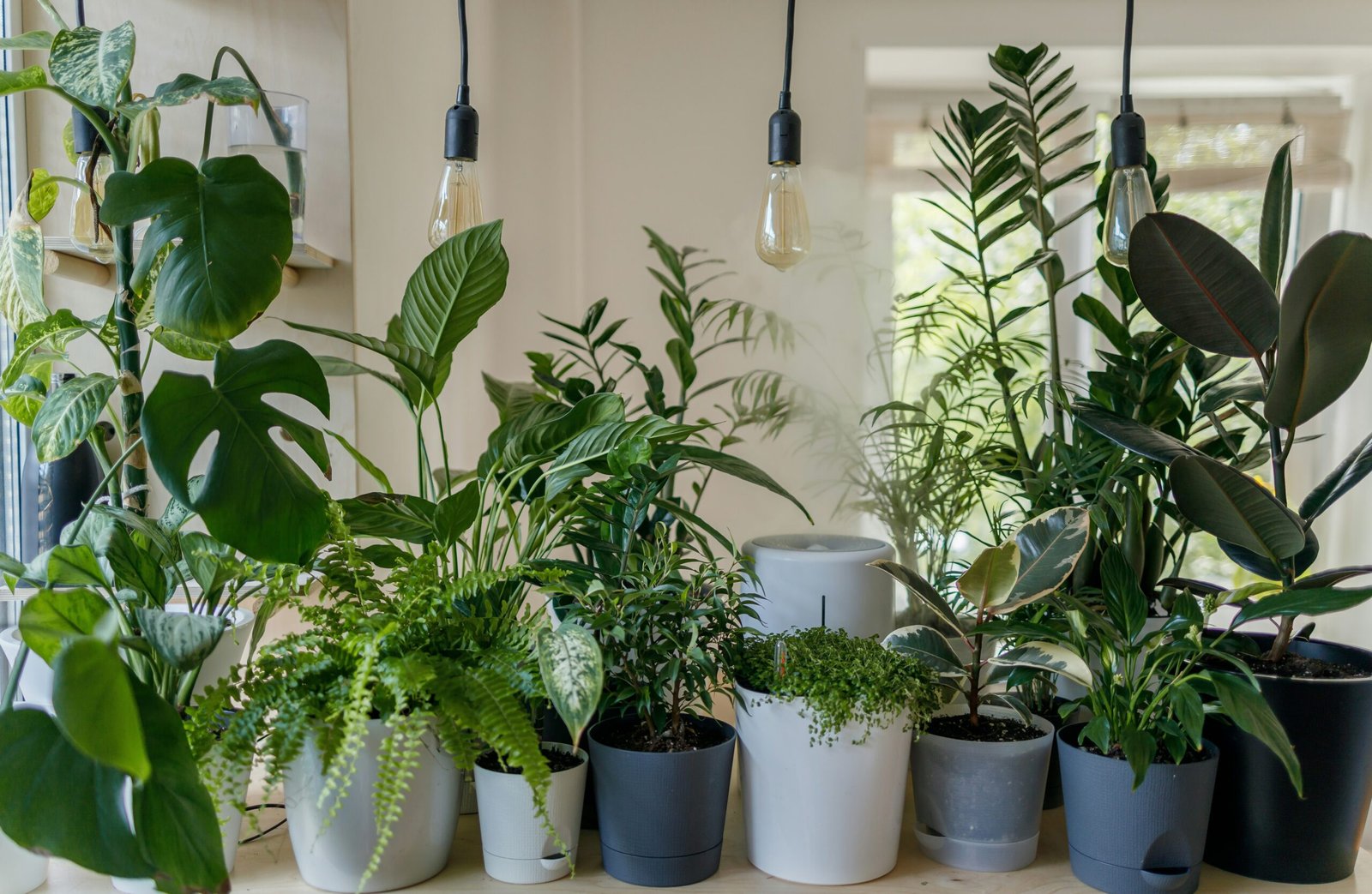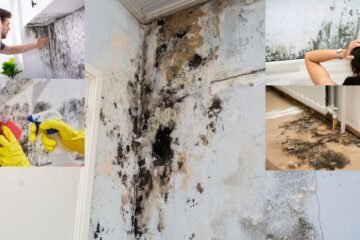Molds thrive in damp and humid environments, so the first step in removing and preventing house molds is to control the moisture levels in your home. Start by identifying any areas of your house that are prone to moisture accumulation, such as basements, bathrooms, and kitchens. Ensure that these areas are well-ventilated and use dehumidifiers to reduce humidity levels.
Once you have addressed the moisture issue, it is time to tackle the existing mold growth. One effective DIY method is to use a mixture of bleach and water. Mix one part bleach with ten parts water and use a sponge or spray bottle to apply the solution to the affected areas. Scrub the moldy surfaces gently and allow the solution to sit for at least fifteen minutes before rinsing with clean water.
Another natural and non-toxic option is to use vinegar. Vinegar is known for its antimicrobial properties and can effectively kill mold spores. Simply fill a spray bottle with undiluted white vinegar and spray it onto the moldy surfaces. Let it sit for an hour before wiping away the mold with a damp cloth.
If you prefer a more eco-friendly approach, you can use hydrogen peroxide. Hydrogen peroxide is a powerful disinfectant and can effectively kill mold. Mix equal parts hydrogen peroxide and water in a spray bottle and apply it to the moldy areas. Allow it to sit for ten minutes before scrubbing away the mold with a brush or sponge.
After removing the mold, it is crucial to take preventive measures to ensure that it does not return. One way to do this is by improving ventilation in your home. Install exhaust fans in bathrooms and kitchens to remove excess moisture from the air. Additionally, open windows and doors to promote air circulation and reduce humidity levels.
Regular cleaning and maintenance can also help prevent mold growth. Clean your house regularly, paying special attention to areas that are prone to moisture, such as showers, sinks, and windowsills. Use mold-resistant paint in areas with high humidity, such as bathrooms, to create a barrier against mold growth.
Lastly, keep an eye out for any signs of water leaks or plumbing issues. Fixing these problems promptly can prevent moisture buildup and subsequent mold growth. Inspect your house regularly for any signs of water damage, such as stains or discoloration on walls or ceilings.
By following these DIY methods and implementing preventive measures, you can effectively remove and prevent house molds. However, if you have a severe mold problem or are unsure about handling it yourself, it is best to consult a professional mold remediation service to ensure the safety of your home and family.
1. Identify and Fix the Source of Moisture
Molds thrive in moist environments, so it is crucial to identify and fix the source of moisture in your house. Check for any leaks in plumbing, roofs, or windows and repair them promptly. Ensure proper ventilation in areas prone to moisture, such as bathrooms and kitchens. By eliminating the source of moisture, you can prevent mold growth in the first place.
One common source of moisture in homes is condensation. Condensation occurs when warm air comes into contact with a cold surface, causing the water vapor in the air to turn into liquid. This can happen on windows, walls, or even pipes. To prevent condensation, you can use dehumidifiers or increase ventilation in the affected areas.
Another potential source of moisture is poor insulation. If your home is not properly insulated, it can allow moisture to seep in through the walls or roof. This can lead to the growth of mold and mildew. To address this issue, you may need to consider adding insulation to your home or improving the existing insulation.
In some cases, the source of moisture may be more difficult to identify. For example, if you live in an area with high humidity, it can be challenging to keep your home dry. In such situations, it may be necessary to invest in a whole-house dehumidifier or other moisture control systems.
Additionally, it is important to regularly inspect and maintain your home to prevent moisture-related issues. This includes cleaning gutters and downspouts to ensure proper drainage, fixing any cracks or gaps in the foundation, and regularly checking for signs of water damage.
By taking proactive measures to identify and fix the source of moisture, you can effectively prevent mold growth and maintain a healthy living environment in your home. Remember, prevention is always better than dealing with the consequences of mold infestation.
2. Use Vinegar
Vinegar is a natural and effective way to remove mold. Mix equal parts of white vinegar and water in a spray bottle. Spray the solution onto the affected areas and let it sit for about an hour. The acetic acid in vinegar is known for its antimicrobial properties, which help kill mold spores and prevent their regrowth. Additionally, vinegar is a safe and non-toxic alternative to harsh chemicals often used in mold removal.
When using vinegar to remove mold, it’s important to note that its effectiveness may vary depending on the type and severity of the mold infestation. While vinegar can effectively eliminate surface mold, it may not be as effective for deep-rooted mold growth or porous surfaces.
Before applying vinegar to the affected areas, it’s advisable to wear protective gloves and a mask to avoid direct contact with the mold spores and minimize the risk of respiratory irritation. Open windows or use a fan to improve ventilation in the area.
After letting the vinegar solution sit for an hour, use a brush or sponge to scrub the mold-infested area. The abrasive action of the brush helps to remove the mold from the surface. Be thorough and make sure to reach all the nooks and crannies where mold might be hiding.
Once you have scrubbed the area, rinse it thoroughly with water to remove any remaining vinegar residue and loosened mold particles. This step is crucial as leaving vinegar on surfaces for an extended period may damage certain materials.
After rinsing, it’s important to dry the area completely. Mold thrives in damp environments, so ensuring that the area is dry will help prevent mold from returning. Use a clean cloth or towel to dry the surface, or if possible, use a fan or dehumidifier to expedite the drying process.
While vinegar is an effective mold removal solution, it’s worth noting that it may not completely eliminate deeply embedded mold or mold that has spread extensively. In such cases, it’s recommended to seek professional help to ensure thorough removal and remediation.
Regular maintenance and preventive measures such as controlling humidity levels, fixing leaks, and improving ventilation can help prevent mold growth in the first place. However, if you do encounter mold in your home, vinegar can be a handy and eco-friendly solution to tackle the problem.
3. Baking Soda
Baking soda is another versatile and inexpensive solution for mold removal. Mix one teaspoon of baking soda with two cups of water and pour the solution into a spray bottle. Spray the mixture onto the mold-infested areas and scrub with a brush. Baking soda not only kills mold but also absorbs moisture, making it harder for mold to grow back.
In addition to its mold removal properties, baking soda has numerous other household uses. It is a natural deodorizer that can be used to eliminate unpleasant odors from various surfaces. Sprinkling baking soda on carpets, upholstery, or even inside shoes can help absorb and neutralize odors. Furthermore, baking soda can be used as a gentle abrasive cleaner for sinks, countertops, and other surfaces.
When it comes to mold removal, baking soda is particularly effective because it is non-toxic and safe to use around children and pets. Unlike harsh chemical cleaners, baking soda does not release harmful fumes or leave behind any residue. This makes it an ideal choice for those who are looking for a natural and eco-friendly solution to combat mold.
In addition to its cleaning properties, baking soda has been used for centuries for its various health benefits. It can be used as a natural remedy for heartburn, indigestion, and even as a teeth whitener. Baking soda can also be used as a natural exfoliant for the skin, helping to remove dead skin cells and leaving it feeling smooth and refreshed.
Overall, baking soda is a versatile and affordable solution for mold removal and a wide range of other household tasks. Its effectiveness, safety, and multiple uses make it a must-have item in every home. Whether you are dealing with mold, odors, or simply looking for a natural cleaning alternative, baking soda is a reliable and eco-friendly option.
4. Hydrogen Peroxide
Hydrogen peroxide is not only a powerful antifungal and antibacterial agent, but it is also an eco-friendly and cost-effective solution for mold removal. Its effectiveness lies in its ability to break down into water and oxygen, making it safe for both humans and the environment. When using hydrogen peroxide to kill mold, it is important to use a 3% concentration, as higher concentrations can be too harsh and may cause damage to certain surfaces.
To effectively use hydrogen peroxide, start by filling a spray bottle with the 3% solution. Spray the affected areas generously, ensuring that the mold is completely saturated. The hydrogen peroxide will penetrate the mold and begin to break it down, killing the spores in the process. Allow the solution to sit for about 10-15 minutes, giving it enough time to work its magic.
After the designated time has passed, it is time to tackle the mold. Grab a scrub brush or a sponge and gently scrub the moldy area. The combination of the hydrogen peroxide and the physical scrubbing action will help to remove the mold from the surface. Be sure to scrub thoroughly, paying attention to any crevices or hard-to-reach areas where mold may be hiding.
Once the mold has been scrubbed away, it is important to rinse the surface with water. This will help to remove any remaining mold spores and hydrogen peroxide residue. Use a clean cloth or sponge to wipe away the excess water and allow the surface to air dry. It is crucial to ensure that the area is completely dry, as any lingering moisture can contribute to mold regrowth.
It is worth noting that hydrogen peroxide may have a bleaching effect on certain materials, especially fabrics and colored surfaces. To avoid any potential damage, it is advisable to test the hydrogen peroxide on a small, inconspicuous area before using it on larger surfaces. This will help you determine if the hydrogen peroxide is safe to use and if any discoloration or bleaching occurs.
Overall, hydrogen peroxide is a versatile and effective solution for mold removal. Its antifungal and antibacterial properties, combined with its eco-friendly nature, make it a popular choice among homeowners. By following the proper application techniques and taking necessary precautions, hydrogen peroxide can help you successfully eliminate mold and create a healthier living environment.
5. Tea Tree Oil
Tea tree oil is a powerful natural remedy for eliminating mold and preventing its growth. Derived from the leaves of the Melaleuca alternifolia tree, tea tree oil has been used for centuries for its antifungal and antibacterial properties. Its effectiveness in killing mold spores makes it a popular choice for mold removal.
To use tea tree oil as a mold killer, you will need to mix it with water in a spray bottle. Combine one teaspoon of tea tree oil with one cup of water and shake well to ensure proper dilution. This solution can then be sprayed onto the moldy areas, allowing the tea tree oil to penetrate the mold and inhibit its growth.
After spraying the solution onto the mold, it is recommended to leave it on for a few hours or even overnight. This allows the tea tree oil to work its magic and effectively kill the mold spores. Once the designated time has passed, you can proceed to scrub the mold off using a brush or sponge.
One of the advantages of using tea tree oil for mold removal is its pleasant scent. Unlike harsh chemical cleaners, tea tree oil leaves behind a refreshing aroma that adds a natural and inviting fragrance to your home. This makes it an excellent choice for those who are sensitive to strong chemical odors or prefer a more environmentally-friendly approach to mold removal.
It is important to note that tea tree oil should always be used with caution, as it can cause skin irritation in some individuals. Before using tea tree oil, it is recommended to perform a patch test on a small area of your skin to ensure that you do not have any adverse reactions. Additionally, tea tree oil should be kept out of reach of children and pets, as it can be toxic if ingested.
In conclusion, tea tree oil is a natural and effective solution for eliminating mold and preventing its recurrence. Its antifungal properties make it a powerful tool in the fight against mold, while its pleasant scent adds a refreshing touch to your home. By using tea tree oil in combination with proper cleaning and maintenance practices, you can keep your living spaces mold-free and enjoy a healthier environment.
6. Borax
Borax is a natural mineral that has been used for centuries as a cleaning and disinfecting agent. Its effectiveness in eliminating mold and inhibiting its growth makes it a popular choice for homeowners dealing with mold issues. When mixed with water, borax forms a solution that can be applied to moldy surfaces using a sponge or brush.
Once the borax solution is applied, it is important to scrub the area thoroughly to ensure that the borax penetrates the mold and removes it effectively. The scrubbing action helps to break down the mold and remove any stubborn stains or residue left behind. After scrubbing, it is recommended to rinse the area with water to remove any remaining borax solution and mold particles.
What sets borax apart from other mold-killing agents is its ability to not only kill existing mold but also inhibit its growth. This makes it an effective preventive measure for areas prone to mold infestation. By regularly treating surfaces with borax solution, homeowners can create an environment that is inhospitable to mold growth, reducing the likelihood of future mold problems.
It is important to note that while borax is a natural and effective solution for mold removal, it should be used with caution. Direct contact with borax can cause skin irritation, so it is advisable to wear gloves and protective clothing when handling it. Additionally, borax should be kept out of reach of children and pets to prevent accidental ingestion.
In conclusion, borax is a versatile and reliable option for mold removal and prevention. Its natural properties and ability to inhibit mold growth make it a valuable tool for homeowners looking to maintain a mold-free environment. By following proper safety precautions and using borax as directed, homeowners can effectively tackle mold issues and safeguard their homes from future infestations.
7. Increase Air Circulation
Poor air circulation can contribute to mold growth in your house. Ensure proper ventilation by using exhaust fans in bathrooms and kitchens. Open windows and doors to allow fresh air to circulate throughout your home. Using dehumidifiers can also help in reducing moisture levels and preventing mold growth.
In addition to these measures, there are several other steps you can take to increase air circulation and minimize the risk of mold in your home. One effective method is to install ceiling fans in rooms that tend to be more prone to moisture, such as bathrooms and laundry rooms. Ceiling fans not only help to circulate the air but also create a gentle breeze that can help to dry out any damp areas.
Another way to improve air circulation is by rearranging your furniture. Make sure that your furniture is not blocking any vents or air registers. By allowing air to flow freely, you can prevent stagnant air pockets where mold can thrive. Additionally, consider using furniture with open designs or raised legs, as this can help to promote better airflow.
Furthermore, it is essential to regularly clean and maintain your HVAC system. Dust and debris can accumulate in the air ducts, hindering airflow and creating an ideal environment for mold growth. Schedule regular professional cleanings to remove any buildup and ensure that your system is functioning efficiently.
Incorporating indoor plants into your home can also contribute to improved air circulation. Plants naturally release oxygen and absorb carbon dioxide, helping to purify the air. They can also act as natural humidifiers, adding moisture to dry indoor environments. However, it is crucial to choose plants that are mold-resistant and easy to care for, as overwatering or neglecting plants can create a breeding ground for mold.
Finally, consider investing in an air purifier with a HEPA filter. These devices can effectively remove airborne particles, including mold spores, from the air. Place the air purifier in rooms where mold is more likely to occur, such as basements or areas with high humidity levels.
By implementing these strategies, you can significantly enhance the air circulation in your home, reducing the risk of mold growth and creating a healthier living environment for you and your family.
8. Clean and Dry Wet Areas Immediately
Preventing mold growth starts with keeping your house clean and dry. If you notice any wet areas, such as spills or leaks, clean and dry them immediately. Do not leave damp clothes or towels lying around. By addressing wet areas promptly, you can prevent mold from taking hold and spreading.
One of the key factors in preventing mold growth is to maintain a dry environment. Mold thrives in damp conditions, so it is crucial to address any wet areas in your home as soon as possible. Whether it’s a spilled drink on the kitchen counter or a leaking pipe in the bathroom, taking immediate action is essential.
When you come across a wet area, the first step is to clean up the spill or fix the source of the leak. Use a clean cloth or paper towel to absorb any liquid and remove any excess moisture. If the spill has seeped into the flooring or carpet, consider using a wet vacuum or a steam cleaner to extract the moisture effectively.
After cleaning up the wet area, it is crucial to ensure that it is thoroughly dried. Leaving any residual moisture behind can create an ideal breeding ground for mold. Open windows and doors to promote air circulation and use fans or dehumidifiers to speed up the drying process. In cases where the wet area is in a confined space, such as a closet or a basement, consider using a portable heater or a moisture-absorbing desiccant to eliminate excess moisture.
It is also important to pay attention to items that tend to hold moisture, such as clothes or towels. Leaving them damp for an extended period can lead to mold growth. Therefore, it is advisable to promptly wash and dry these items, ensuring they are completely dry before storing them away.
By addressing wet areas promptly and ensuring thorough drying, you can effectively prevent mold from taking hold and spreading in your home. Mold growth not only poses a risk to your health but can also cause significant damage to your property. So, make it a habit to clean and dry wet areas immediately, and you’ll be taking a proactive step towards creating a mold-free environment in your home.
9. Regularly Clean and Maintain Your House
Regular cleaning and maintenance can go a long way in preventing mold growth. Vacuum and dust your house regularly to remove any mold spores that may be present. Clean bathroom tiles, shower curtains, and other surfaces prone to moisture regularly. Keep an eye out for any signs of mold and address them promptly to prevent further growth.
In addition to regular cleaning, there are several other measures you can take to maintain a mold-free environment in your home. One important step is to ensure proper ventilation throughout your house. Good air circulation helps to reduce moisture levels, making it less conducive for mold to grow. You can achieve this by opening windows and using exhaust fans in areas such as the bathroom and kitchen.
Furthermore, it is crucial to keep an eye on areas that are prone to moisture accumulation. This includes areas such as basements, attics, and crawl spaces. These areas are particularly susceptible to mold growth due to their high humidity levels. Regularly inspect these spaces for any signs of water leaks or dampness. If you notice any, it is essential to address the issue immediately and fix any leaks or waterproof the area to prevent further moisture problems.
Another important aspect of maintaining a mold-free home is to control the indoor humidity levels. Ideally, the humidity in your house should be kept between 30% and 50%. You can use a dehumidifier to achieve this level of humidity, especially in areas where moisture tends to accumulate. Additionally, using air conditioners and ensuring proper insulation can help regulate humidity levels and prevent excess moisture from building up.
It is also important to pay attention to the exterior of your home. Ensure that gutters and downspouts are clear of debris and functioning properly to prevent water from seeping into your house. Regularly inspect the roof for any signs of damage or leaks and address them promptly. Properly maintaining the exterior of your home can help prevent water intrusion and subsequent mold growth.
In conclusion, regular cleaning and maintenance are crucial in preventing mold growth in your home. By following these steps and being proactive in addressing any signs of mold or moisture issues, you can create a healthy and mold-free living environment for you and your family. Remember, prevention is always better than cure when it comes to mold.
11. Improve Ventilation
In addition to monitoring humidity levels, it is important to improve ventilation in your home. Proper ventilation helps to circulate fresh air and reduce moisture, which can contribute to mold growth. Open windows and doors regularly to allow for air circulation. Consider installing exhaust fans in areas prone to moisture, such as bathrooms and kitchens, to remove excess humidity. Additionally, using ceiling fans or portable fans can help to improve air circulation throughout your home.
12. Fix Plumbing Leaks Promptly
Leaky pipes and faucets can create a breeding ground for mold. Even small leaks can lead to moisture buildup, providing the perfect conditions for mold to thrive. Therefore, it is crucial to fix plumbing leaks promptly. Regularly inspect your plumbing system for any signs of leaks, such as water stains, musty odors, or dampness. If you notice any issues, hire a professional plumber to repair the leaks and prevent further damage.
13. Clean and Dry Wet Areas Immediately
Wet areas in your home, such as bathrooms, kitchens, and basements, are particularly susceptible to mold growth. To prevent mold from developing, it is important to clean and dry these areas immediately after they become wet. Wipe down surfaces with a disinfectant cleaner and dry them thoroughly. Pay special attention to areas where water tends to accumulate, such as around sinks, toilets, and showers. By addressing wetness promptly, you can minimize the chances of mold taking hold.
14. Use Mold-Resistant Materials
When renovating or remodeling your home, consider using mold-resistant materials. These materials are specifically designed to inhibit mold growth and can be used in various areas of your home, including walls, flooring, and ceilings. Examples of mold-resistant materials include mold-resistant drywall, paint, and insulation. By using these materials, you can add an extra layer of protection against mold and ensure a healthier indoor environment.
15. Regularly Clean and Maintain Your HVAC System
Your HVAC (Heating, Ventilation, and Air Conditioning) system plays a crucial role in maintaining indoor air quality. However, if not properly maintained, it can become a breeding ground for mold. To prevent this, it is important to regularly clean and maintain your HVAC system. Change air filters regularly to ensure proper airflow and remove any accumulated dust or debris. Additionally, have your HVAC system inspected and serviced by a professional at least once a year to detect and address any potential mold issues.
By implementing these additional measures, along with the previous tips, you can effectively remove and prevent mold in your home. Remember, mold can have serious health implications, so it is important to be proactive in addressing any mold problems. With proper care and maintenance, you can create a mold-free environment for you and your family to enjoy.






